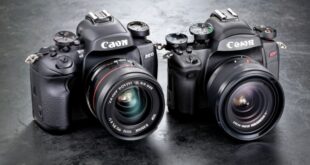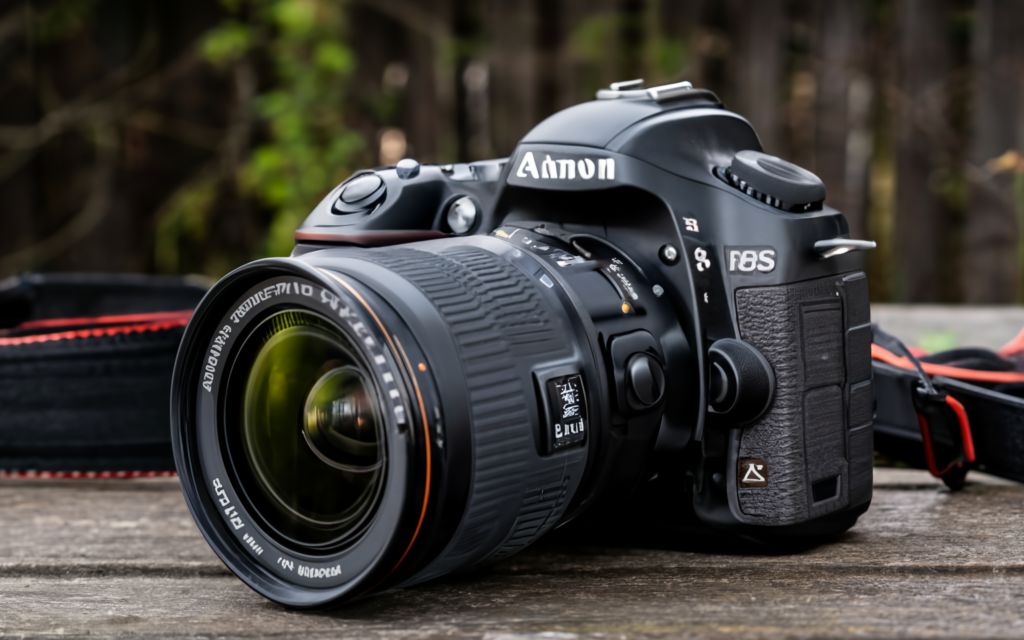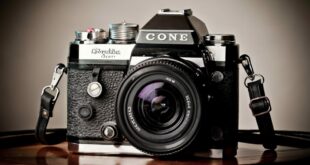The Evolution of Canon DSLR Cameras
📷 Over the past few decades, Canon has established itself as a powerhouse in the world of photography with its range of DSLR cameras. From beginners to professionals, Canon DSLR cameras have catered to the needs of photographers at all levels. With a rich history of innovation and excellence, Canon has consistently pushed the boundaries of technology, making their DSLR cameras a preferred choice for many. In this article, we will take you on a journey through the Canon DSLR camera timeline, highlighting the key milestones and advancements that have shaped the brand’s legacy.
Introduction
📜 Hello, photography enthusiasts! Are you ready to dive into the world of Canon DSLR cameras? Canon has been a trusted name in photography for decades, and its DSLR cameras have been at the forefront of capturing timeless moments. In this article, we will explore the evolution of Canon DSLR cameras, discussing their advantages, disadvantages, and everything you need to know before making a purchase. So, grab your favorite lens and let’s embark on this exciting journey!
Canon EOS DCS
📅 The first Canon DSLR camera, the EOS DCS, was introduced in 1995. It was a collaborative effort between Canon and Kodak, combining Canon’s expertise in optics with Kodak’s digital imaging technology. The EOS DCS marked a significant milestone in the history of DSLR cameras, paving the way for future innovations.
Canon EOS-1D
📅 In 2001, Canon launched the EOS-1D, targeting professional photographers with its impressive features and rugged build. This camera introduced the renowned “digic” image processor, delivering exceptional image quality and processing speed. Its advanced autofocus system and high ISO performance made it a top choice for sports and action photography.
Canon EOS Rebel Series
📅 The Canon EOS Rebel series, consisting of entry-level DSLR cameras, debuted in 2003. The Rebel series revolutionized the market by offering affordable DSLR options without compromising on quality. These cameras empowered amateur photographers to explore their creativity and learn the art of photography.
Canon EOS 5D
📅 Enter the full-frame era! In 2005, Canon introduced the EOS 5D, a game-changer for both professionals and enthusiasts. With its affordable price tag and remarkable image quality, the EOS 5D shattered the barrier between amateur and professional photography. It became a favorite among wedding photographers and filmmakers.
Canon EOS 7D
📅 2009 witnessed the launch of the Canon EOS 7D, targeting the advanced amateur and semi-professional market. This camera boasted an impressive 19-point autofocus system, high-speed continuous shooting, and exceptional low-light performance. The EOS 7D truly bridged the gap between consumer and professional-grade DSLRs.
Canon EOS 5D Mark II
📅 The Canon EOS 5D Mark II, released in 2008, marked a significant milestone by introducing full HD video recording capabilities to a DSLR camera. This feature revolutionized the filmmaking industry, and the 5D Mark II quickly became a favorite among videographers. Its exceptional image quality and versatility opened up new avenues for visual storytelling.
Canon EOS 5D Mark IV
📅 Continuing the legacy of the 5D series, Canon launched the EOS 5D Mark IV in 2016. This camera brought forth advancements in autofocus technology and low-light performance, making it ideal for professional photographers and filmmakers. The 5D Mark IV also introduced Dual Pixel RAW, enabling precise post-production adjustments.
The Advantages of Canon DSLR Camera Timeline
✅ Canon DSLR cameras have numerous advantages that have contributed to their popularity:
1. Versatility and Flexibility
✨ Canon DSLR cameras offer a wide range of lenses and accessories, allowing photographers to capture various subjects and experiment with different styles. From portrait photography to wildlife and landscape, Canon DSLRs offer versatility and flexibility for every genre.
2. Image Quality
✨ Canon’s reputation for delivering exceptional image quality is well-deserved. With their high-resolution sensors and advanced image processors, Canon DSLR cameras produce stunning, sharp, and detailed photographs. Whether you’re printing large-sized prints or displaying your work online, Canon DSLRs will not disappoint.
3. Optics and Lens Selection
✨ Canon’s extensive lens lineup is a major advantage for DSLR users. With a wide range of lenses, from ultra-wide-angle to super-telephoto, Canon ensures that photographers have the right tools to capture their vision. The availability of quality lenses allows photographers to achieve greater artistic expression and push the boundaries of their creativity.
4. Ergonomics and Build Quality
✨ Canon DSLR cameras are renowned for their ergonomic design, making them comfortable to hold and use for extended periods. The robust build quality ensures durability, allowing photographers to confidently capture in diverse environments. Whether shooting in extreme temperatures or challenging conditions, Canon DSLRs are built to withstand the demands of professional use.
5. Autofocus System
✨ Canon’s advanced autofocus systems ensure sharp and accurately focused images. Whether shooting fast-moving subjects or capturing precise details, Canon DSLRs excel in delivering reliable autofocus performance. The availability of various autofocus modes and customization options further enhances the shooting experience.
6. Creative Controls and Customization
✨ Canon DSLR cameras provide photographers with extensive creative controls and customization options. From manual exposure controls to customizable buttons and menus, Canon DSLRs empower photographers to tailor their camera settings according to their shooting style and preferences.
7. Consistent Software Support
✨ Canon has a strong track record of providing software support and firmware updates for their DSLR cameras. This ensures that photographers can enjoy the latest features, bug fixes, and improvements, prolonging the lifespan of their cameras and enhancing the overall user experience.
The Disadvantages of Canon DSLR Camera Timeline
❌ While Canon DSLR cameras have numerous advantages, they also have certain disadvantages that potential buyers should consider:
1. Size and Weight
❌ DSLR cameras, including Canon’s offerings, tend to be bulkier and heavier compared to mirrorless cameras. This can be a challenge during travel or when shooting for long durations. However, the robust build quality and ergonomic design compensate for the added bulk.
2. Limited Live View and Video Features
❌ Canon DSLR cameras have traditionally focused more on still photography rather than video capabilities. While recent models have seen significant improvements in video features, they may still lag behind dedicated video-centric cameras or mirrorless systems in terms of advanced video functionality and features.
3. Mirror Mechanism and Noise
❌ DSLR cameras utilize a mirror mechanism, which introduces noise and vibration during operation. This noise can be distracting, especially in quiet environments or when shooting in silent mode. However, advancements in technology have reduced the impact of this drawback in modern Canon DSLR cameras.
4. Limited Continuous Shooting Speed
❌ While Canon DSLR cameras offer impressive continuous shooting speeds, they may not match the blazing-fast burst rates of some mirrorless cameras. This can be a limiting factor when shooting high-speed action or sports photography, where capturing crucial moments is paramount.
5. Limited Electronic Viewfinder (EVF) Options
❌ Electronic viewfinders (EVFs) have become increasingly popular in mirrorless cameras, offering real-time exposure previews and various customizable displays. Canon DSLR cameras, however, rely on optical viewfinders, which lack the benefits of EVFs. That being said, optical viewfinders have their advantages, such as no lag and natural viewing experience.
6. Less Compact Lens Options
❌ While Canon offers a wide range of lenses for DSLR cameras, the overall size and weight of these lenses can make the system less compact compared to mirrorless alternatives. This can be a consideration for photographers who prioritize portability and convenience.
7. Learning Curve
❌ DSLR cameras, including Canon’s offerings, have more complex user interfaces compared to point-and-shoot or smartphone cameras. This can result in a steeper learning curve for beginners. However, Canon provides intuitive user interfaces and extensive resources to help users learn and master their DSLR cameras.
Canon DSLR Camera Timeline: Complete Information Table
| Camera Model | Release Year | Key Features |
|---|---|---|
| Canon EOS DCS | 1995 | Collaboration with Kodak, early digital imaging technology |
| Canon EOS-1D | 2001 | “digic” image processor, advanced autofocus, high ISO performance |
| Canon EOS Rebel Series | 2003 | Affordable entry-level DSLRs |
| Canon EOS 5D | 2005 | Full-frame sensor, affordable professional-grade DSLR |
| Canon EOS 7D | 2009 | Advanced amateur and semi-professional DSLR |
| Canon EOS 5D Mark II | 2008 | Full HD video recording capabilities |
| Canon EOS 5D Mark IV | 2016 | Advanced autofocus, low-light performance, Dual Pixel RAW |
Frequently Asked Questions (FAQ)
1. Which Canon DSLR camera is best for beginners?
📌 Canon EOS Rebel T7 is an excellent choice for beginners. It offers a user-friendly interface, affordable price, and decent image quality.
2. Can I use third-party lenses with Canon DSLR cameras?
📌 Yes, Canon DSLR cameras support third-party lenses with the appropriate mount. However, it’s essential to ensure compatibility and check reviews before making a purchase.
3. Are Canon DSLR cameras weather-sealed?
📌 Many Canon DSLR cameras, especially the higher-end models, offer weather-sealing to protect them from dust and moisture. However, it’s important to refer to the specific camera’s specifications to confirm its level of weather resistance.
4. Can Canon DSLR cameras shoot in low light conditions?
📌 Yes, Canon DSLR cameras excel in low-light photography. They offer excellent high ISO performance, allowing you to capture detailed images even in challenging lighting conditions.
5. Are Canon DSLR cameras suitable for professional use?
📌 Yes, Canon DSLR cameras, particularly the higher-end models, are widely used by professional photographers. They offer a wide range of features and exceptional image quality required for professional work.
6. How often does Canon release new DSLR models?
📌 Canon typically releases new DSLR models at regular intervals, often introducing advancements in technology and features. However, the frequency of releases may vary depending on market demands and technological advancements.
7. Can I use Canon DSLR cameras for video recording?
📌 Yes, Canon DSLR cameras are capable of recording high-quality videos. However, dedicated video cameras or mirrorless cameras may offer more advanced video features and better autofocus performance for videography purposes.
8. How do I clean the sensor of a Canon DSLR camera?
📌 Canon provides detailed instructions and guidelines for sensor cleaning in their user manuals. It’s recommended to use specialized sensor cleaning tools and follow the instructions carefully to avoid any damage.
9. Can I connect external flashes or studio lights to Canon DSLR cameras?
📌 Yes, Canon DSLR cameras typically offer a hot shoe or a sync terminal to connect external flashes or studio lights. This allows photographers to explore various lighting techniques and enhance their creativity.
10. Can I shoot in RAW format with Canon DSLR cameras?
📌 Yes, Canon DSLR cameras provide the option to shoot in RAW format, which allows for greater flexibility in post-processing and ensures maximum image quality.
11. Do Canon DSLR cameras have built-in image stabilization?
📌 Canon DSLR cameras do not have built-in image stabilization in the body. However, many Canon lenses offer image stabilization, which compensates for camera shake and helps achieve sharper images.
12. Can I use legacy lenses with Canon DSLR cameras?
📌 Yes, depending on the specific lens mount and compatibility, it is possible to use legacy lenses with Canon DSLR cameras. However, manual focusing and exposure settings may be required for some lenses.
13. Are Canon DSLR cameras Wi-Fi enabled?
📌 Many Canon DSLR cameras offer built-in Wi-Fi or have optional Wi-Fi adapters available, allowing for wireless transfer of images and remote control functionality through smartphones or computers.
Conclusion
📝 Exploring the Canon DSLR camera timeline has taken us on a captivating journey of innovation and excellence. From the early collaborations to the groundbreaking 5D series, Canon has continuously pushed the boundaries of what DSLR cameras can achieve. The advantages of Canon DSLR cameras, such as versatility, image quality, and extensive lens selection, make them a trusted choice for photographers worldwide.
However, it’s important to consider the disadvantages, including size and weight, limited video features, and the learning curve associated with DSLRs. Each photographer’s needs and preferences should guide their decision when choosing a camera.
So, whether you’re a beginner embarking on your photographic journey or a seasoned professional looking to upgrade, Canon DSLR cameras offer a wide range of options to suit every need. Capture extraordinary moments, unleash your creativity, and tell your visual stories with the remarkable Canon DSLR camera lineup.
Disclaimer
📄 The information provided in this article is based on research and knowledge available at the time of writing. Canon’s product lineup and specifications may undergo changes or updates in the future, so it is recommended to refer to Canon’s official website or authorized dealers for the most up-to-date information before making any purchasing decisions.



